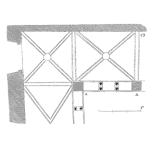
When calculating the replacement asset value fo items brought overseas, factor the effect of the difference in exchange rate into the calculation.
Ahmed asks:
How can we calculate replacement asset value (RAV) of a plant? We have 100’s of equipment in our three plants and we cannot contact 100’s of Vendors to tell us today’s equipment value. We have only the Capitalization Cost or installed historic value of assets.
The oldest plant was installed 6 yrs back (Aug 2015) for a total plant or asset value in our accounting record of 10 MMPKR. When the plant was installed 1 USD = 100 PKR and now after 6 yrs the exchange rate is 1 USD = 172 PKR. We took the capitalization cost of 10 MMPKR and calculated replacement asset value at today’s worth as 10 * 172/100 MMPKR.
Dear Ahmed,
By definition, replacement asset value is the capital cost to build an existing asset in today’s monetary value. Old plant was built using financing available at that time. If the plant was built today its financing would be as required by today’s circumstances. When calculating replacement asset value it is necessary to incorporate various effects that occurred across the years. Such effects include exchange rate changes, differences in cost of borrowing, and the local inflation rate.
If you know that over the years those factors have changed and they clearly affect the cost of a new replacement asset, then you need to include those effects when determining today’s replacement asset value. If the plant is not too old, say built within the last 10 years, it might be reasonable to use historic purchase, construction, and installation values and then factor in the fiscal effects during that period to estimate current capital cost, i.e. the replacement asset value. But if the plant is older, then that approach does not allow for the technological and engineering advances that occur to reduce capital costs over a long time.
When you calculate replacement asset value for the assets of an operation the determination uses the actual prices and costs paid by the operation. Because the RAV relates to the operation being analysed the costs and financials must be those directly applying to your plants in Pakistan. Fortunately, you know the original capital costs, since they are noted in the accounting records.
From my understanding, the effect of past currency fluctuations in the country of purchase and in the country of manufacture are incorporated in their exchange rate. The cost of an asset brought overseas includes the historic effects on the exchange rate in its price at the time of purchase.
With regards the exchange rate effect. Once you determine the difference between today’s exchange rate and the exchange rate at the time of asset purchase you can calculate its influence on today’s replacement asset value. Your RAV calculation correctly used the difference in exchange rate in August 2015 to that six years later to determine its effect on today’s RAV.
With regards the cost-of-money effect. When an asset is purchased with borrowed money it is necessary to determine the effect of changes in interest rate when calculating its RAV. The RAV for an asset purchased six years ago with money borrowed at 10% interest which can be brought today with borrowed money at 2% interest needs to incorporate the effect of the different interest rates.
Once you incorporate all the effects of time and monetary changes in calculating replacement asset value you must ask yourself if the RAV is actually true and realistic for your situation. As a double check on the accuracy of the RAV calculated for today, you could take 10 to 12 assets and contact their suppliers to get the installed price of each asset if brought today.
Another issue you need to address when determining RAV is the effect of the local inflation. Where you need to consider inflation is for any asset, labour, services, or expenses paid in PKR six years ago when the plant was built. To buy the equivalent asset, labour, services, or expenses today includes the effect of local inflation over those years.

Thank you for the published chart above of the past and forecast change in annual inflation rate.
The inflation effect for the oldest plant is [value in Aug 2015 x 1.0286 x 1.04 x 1.0393 x 1.0674 x 1.1074 x 1.0866], which compounds to a total of [value in Aug 2015 x 1.428]. That figure says to me the effect of inflation since construction is to increase the local costs of building the plant by 43% above their original value.
It is best to speak to your company accounting people and get their advice on what to do when determining an asset’s RAV. Their advice would supersede any of my comments made in this correspondence with you.
I hope these thoughts and discussion provide you with some guidance to help address your query on calculating replacement asset value of your assets brought overseas.
All the best to you,
Mike Sondalini
 Ask a question or send along a comment.
Please login to view and use the contact form.
Ask a question or send along a comment.
Please login to view and use the contact form.
Leave a Reply